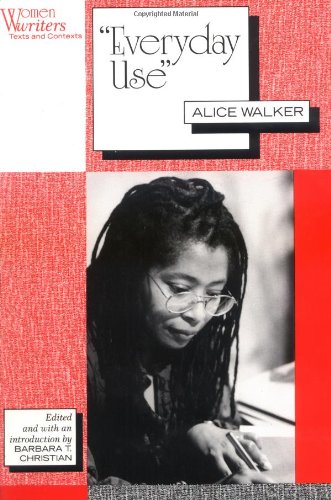All Nonfiction
- Bullying
- Books
- Academic
- Author Interviews
- Celebrity interviews
- College Articles
- College Essays
- Educator of the Year
- Heroes
- Interviews
- Memoir
- Personal Experience
- Sports
- Travel & Culture
All Opinions
- Bullying
- Current Events / Politics
- Discrimination
- Drugs / Alcohol / Smoking
- Entertainment / Celebrities
- Environment
- Love / Relationships
- Movies / Music / TV
- Pop Culture / Trends
- School / College
- Social Issues / Civics
- Spirituality / Religion
- Sports / Hobbies
All Hot Topics
- Bullying
- Community Service
- Environment
- Health
- Letters to the Editor
- Pride & Prejudice
- What Matters
- Back
Summer Guide
- Program Links
- Program Reviews
- Back
College Guide
- College Links
- College Reviews
- College Essays
- College Articles
- Back
Everyday Use by Alice Walker
Alice Walker is an African-American author who writes many novels, poems, and short stories. One short story in particular was that Alice wrote was “Everyday Use”. This short story is about a single mother raising two daughters, Maggie and Dee. In the story, the mother is the narrator and two daughters, Maggie and Dee are the protagonists. The story has an important theme of heritage revealed through Dee’s actions as well as an object in the story.
The story begins with the mother talking about how when Dee leaves, Maggie will feel hopeless and ashamed from her burn scars. Maggie had got these scars from their other house that had burned down. The mother also wants to be with her daughter Dee. She talks about a dream where Dee and her embrace and smile into each other’s faces. When Dee comes home, the mother is excited because she is arriving home, but she comes home with a guy named, Asalamalakim. Also when she calls Dee she answers by saying her name is not Dee, it is “Wangero”. When they enter into the house Wangero all of a sudden has interest in the family heritage. The whole reason she had changed her name was to get away from her past; away from the family’s heritage. This is because back then the family had been owned as slaves and her name had been passed down to her from her ancestors. She shows this sudden interest because she wants several objects in the house that came from her ancestors and family. The object Dee wanted most were the quilts that had been pieced by their grandma, Big Dee. The mother does not allow Dee to keep the quilts because she had promised them to Maggie. While Dee is arguing with Maggie and her mother that she should keep the quilts, the mother says that Magie will put the quilts to use since she has just been saving the quilts and nobody was using the quilts. This was the mother’s response to when Dee had said all Maggie would do would put them to use. Dee ends up leaving the house without the quilts and before leaving tells Maggie that she does not understand her heritage.
The theme in this story has to do with appreciating your family’s heritage. This is shown when Dee wants the quilts and values other things like the carved benches. Though Dee does not show real interest in the family heritage, this idea still goes through to the reader. Dee is more into handmade objects and not interested in the actual family heritage. This is shown when Dee wants the quilts that were made by Grandma Dee herself and not the quilts that had been worked on with machinery.
One of the literary elements used in the story is imagery. Imagery is used in the story when the mother describes the look on Dee’s face after being denied the quilts. It says, “She had filled her bottom lip with checker snuff and gave her face a kind of dopey, hangdog look”. Also there is imagery when she talks about Maggie at the house fire. It says, “I can still hear the flames and feel Maggie’s arms sticking to me and her hair smoking and her dress falling off her in little black papery flakes”. This shows the effect this incident had on the mother. This is something the mother will always remember because they not only lost their home but also the physical effect it had on Maggie.
Overall, this short story is a well-rounded story on the topic of family and heritage. If you want a story about heritage and family, I would recommend this short story because it fits the topic of heritage greatly. The story also gives background upon the family. They were once slaves and this made Dee change her name to get away from it. There might be things that have happened but you can’t change it so you might as well deal with it. This story shows the whole idea of heritage and family.
This story has a good plot with interesting characters that create a great theme in the story. This story is one of Alice Walker’s short stories that stands out. The story gives good detail on each character, making it that much better to read.
Similar Articles
JOIN THE DISCUSSION
This article has 0 comments.

